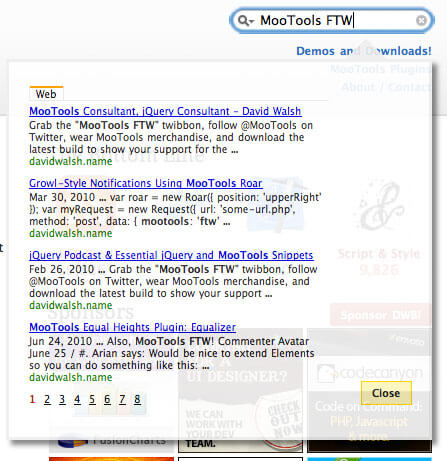
Modals have been an important part of websites for two decades. Stacking contents and using fetch to accomplish tasks are a great way to improve UX on both desktop and mobile. Unfortunately most developers don’t know that the HTML and JavaScript specs have implemented a native modal system via the popover attribute — let’s check it out!
The HTML
Creating a native HTML modal consists of using the popovertarget attribute as the trigger and the popover attribute, paired with an id, to identify the content element:
<!-- "popovertarget" attribute will map to "id" of popover contents --> <button popovertarget="popover-contents">Open popover</button> <div id="popover-contents" popover>This is the contents of the popover</div>
Upon clicking the button, the popover will open. The popover, however, will not have a traditional background layer color so we’ll need to implement that on our own with some CSS magic.
The CSS
Styling the contents of the popover content is pretty standard but we can use the browser stylesheet selector’s pseudo-selector to style the “background” of the modal:
/* contents of the popover */
[popover] {
background: lightblue;
padding: 20px;
}
/* the dialog's "modal" background */
[popover]:-internal-popover-in-top-layer::backdrop {
background: rgba(0, 0, 0, .5);
}
:-internal-popover-in-top-layer::backdrop represents the “background” of the modal. Traditionally that UI has been an element with opacity such to show the stacking relationship.

39 Shirts – Leaving Mozilla
In 2001 I had just graduated from a small town high school and headed off to a small town college. I found myself in the quaint computer lab where the substandard computers featured two browsers: Internet Explorer and Mozilla. It was this lab where I fell…

5 HTML5 APIs You Didn’t Know Existed
When you say or read “HTML5”, you half expect exotic dancers and unicorns to walk into the room to the tune of “I’m Sexy and I Know It.” Can you blame us though? We watched the fundamental APIs stagnate for so long that a basic feature…

Implement the Google AJAX Search API
Let’s be honest…WordPress’ search functionality isn’t great. Let’s be more honest…no search functionality is better than Google’s. Luckily for us, Google provides an awesome method by which we can use their search for our own site: the Google AJAX Search API.

Table Cell and Position Absolute
If you follow me on Twitter, you saw me rage about trying to make
position: absolutework within aTDelement ordisplay: table-cellelement. Chrome? Check. Internet Explorer? Check. Firefox? Ugh, FML. I tinkered in the console…and cussed. I did some researched…and I…
Source link

Leave a Reply